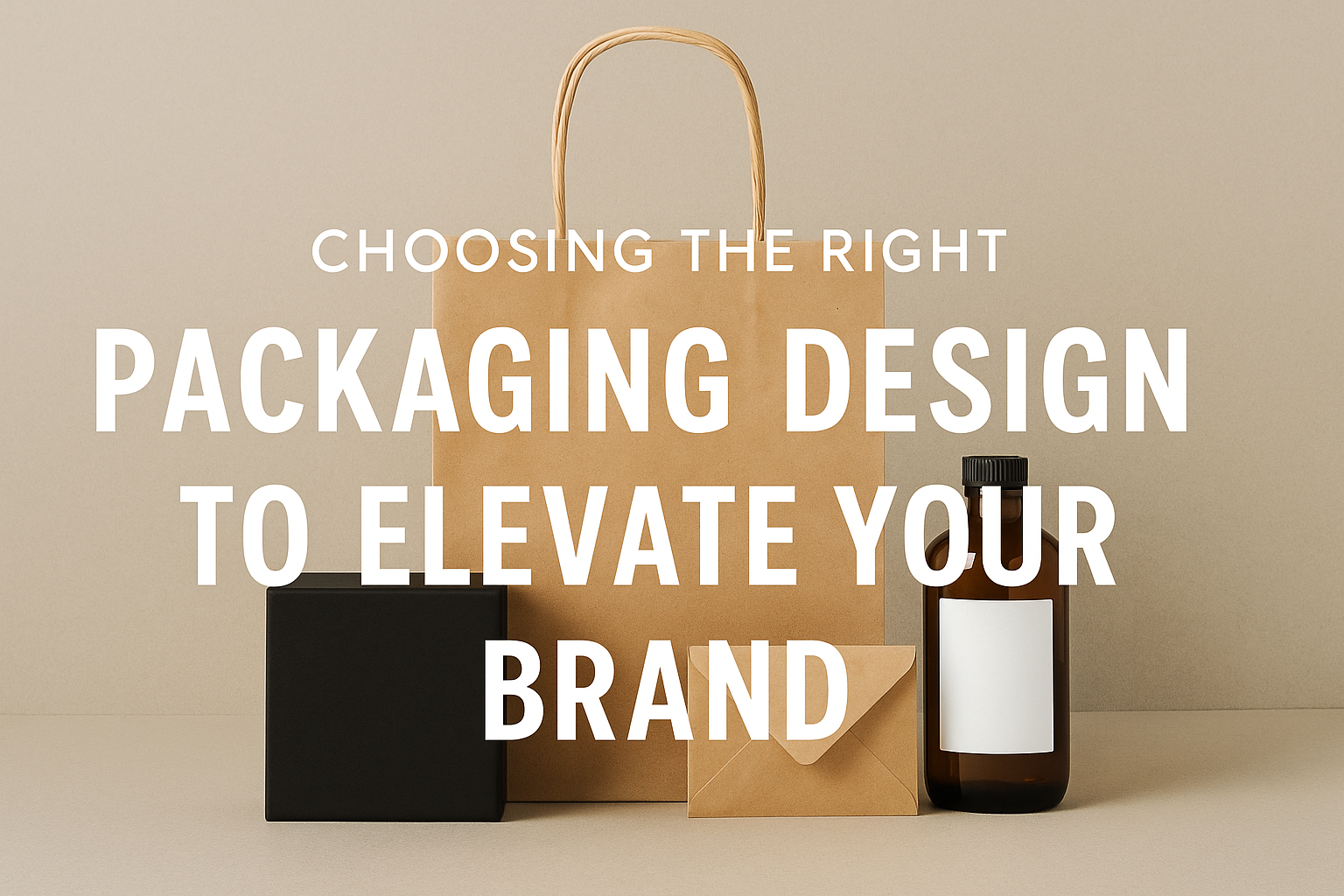How to Choose the Right Packaging Design to Elevate Your Brand
Packaging is more than just a box—it’s the first impression your customer has with your product. In crowded markets where shoppers are bombarded with choices, design can be the deciding factor between a sale and a missed opportunity.
In fact, 72% of consumers say packaging design influences their purchase decisions. Done right, packaging protects your product, tells your story, and builds customer loyalty. Done wrong, it risks lost sales, damaged goods, and a forgettable brand experience.
This guide walks you step-by-step through how to choose packaging design that not only functions but elevates your brand identity, connects with your audience, and creates lasting impressions.
1. Start with Your Brand Identity
Your packaging should act as a physical extension of your brand.
Colors, typography, and graphics should align with your brand personality.
A minimalist design often communicates eco-conscious values.
Bold patterns and bright hues connect with lifestyle-forward brands.
Think of packaging as a silent salesperson on the shelf or in the delivery box. Every detail should say: this is who we are.
Pro Tip: If you’re new to design, platforms like Sticker Mule or 99designs make it easy to create professional packaging without hiring a full-time designer.
2. Know Your Customer
The most beautiful packaging won’t work if it doesn’t resonate with your buyers.
Luxury shoppers expect details like embossing, foil stamping, and premium textures.
Eco-conscious consumers prefer recyclable, compostable, or minimal packaging.
E-commerce customers value unboxing experiences that are “Instagram-worthy” and easy to open.
A great example is Glossier’s pink bubble mailer, which became instantly recognizable across social media while reinforcing the brand’s identity.
Pro Tip: Companies like EcoEnclose and Packlane provide sustainable and customizable options tailored to different customer segments.
3. Balance Functionality with Aesthetics
Good design is more than looks—it should protect and perform.
Use resealable zippers for freshness.
Reinforce corrugated cartons for heavy products.
Add eye-catching design for retail shelves.
The best packaging combines convenience, durability, and style.
Pro Tip: For shipping supplies and structural packaging, check out Uline or custom options from Sticker Mule.
4. Make Sustainability Part of the Design
Sustainability is no longer optional—it’s expected. Today’s customers want brands to prove they’re environmentally responsible.
Choose recyclable corrugated boxes.
Use soy-based inks instead of petroleum-based inks.
Swap plastic fillers for compostable or paper alternatives.
A strong case study is Patagonia, which uses minimal ink and recycled materials across its packaging. Their eco-first design reinforces their commitment to sustainability and strengthens loyalty.
Pro Tip: Companies like EcoEnclose and Noissue specialize in eco-friendly packaging that doesn’t sacrifice aesthetics.
5. Tell Your Brand Story
Your packaging is a storytelling platform. Use it to connect emotionally with customers.
Print your mission statement or founder’s note on inserts or side panels.
Include QR codes that link to videos, how-to guides, or loyalty programs.
Launch seasonal or limited-edition designs to keep excitement high.
Every panel, flap, and insert is a chance to build a relationship beyond the transaction.
Pro Tip: Tools like Canva Pro or Printify let you design packaging that communicates your story without heavy design costs.
6. Keep Practical Considerations in Mind
Creative packaging must also be realistic. Before committing to a design, consider:
Compliance needs such as barcodes, FDA requirements, or safety labeling.
Budget constraints—luxury packaging may not suit low-margin products.
Scalability—designs should be easy to reproduce as your business grows.
This balance ensures your packaging is both inspiring and operationally feasible.
Pro Tip: For print runs that balance creativity with scale, try Vistaprint or Arka.
Conclusion: Packaging as Brand Power
Packaging is more than protection—it’s a profit multiplier. By aligning design with your brand identity, tailoring it to your customers, balancing function with sustainability, and using it as a storytelling tool, you create more than a container. You create an experience.
In a competitive market, your packaging can be the difference between a one-time buyer and a lifelong advocate.
Take the first step today: explore partners like Sticker Mule, EcoEnclose, and 99designs to start building packaging that elevates your brand.




